DC Comics is trying something new. In the wake of their Rebirth initiative, the publisher has rapidly expanded its content to include diverse new imprints such as Young Animal, Wildstorm, Black Label, Ink, and Zoom. As their lineup expands, it can be hard to figure out what to pick up each week. That’s what the Comics Beat managing editor Alex Lu, entertainment editor Kyle Pinion, and contributor Louie Hlad are here to help you with.
THIS WEEK: Alex takes a look at each of the four stories that comprise the new Sandman Universe.
Note: the reviews below contain **spoilers**. If you want a quick, spoiler-free buy/pass recommendation on the comics in question, check out the bottom of the article for our verdict.
The Sandman Universe #1
Colorist: Mat Lopes
Letterer: Simon Bowland
Everyone has that book. The one that made them realize that comics were something special– unlike any other storytelling medium out there. For me, that book is The Sandman.
The Sandman wasn’t my first comic. In fact, the first time I tried to read it, I couldn’t get through the first volume. But after I tried again and started to dive deeper into the series, I was enchanted. Here was a story that took risks and pushed the boundaries of the form. As much as Neil Gaiman and his murderer’s row of artistic collaborators were spinning a longform narrative about a reluctant primordial entity and his centuries-long transformation, they were also telling a story that was fundamentally about play. Playing with ideas of narrative and character. Pushing visual boundaries and warping figures from traditional mythology to suit the contemporary moment. Not everything the series did has aged well (its portrayal of trans characters, women, and lack of PoC representation leaves much to be desired), but to this day, The Sandman reminds me that anything is possible in comics. And that boundless imagination is what we’re here to discuss today as a new set of Sandman stories enter the world.
In a certain sense, any attempt at revisiting Sandman is going to violate the reason why I loved the original series. It’s arguably Vertigo’s most bankable property and Gaiman has gone on to become a titan in comics, prose, and media at large, so all new Sandman books– even at their most creatively vital– are standing on the shoulders of a commercial giant. They will inevitably build upon what came before, offering the ephemeral taste of old pleasures revisited and nostalgia for a time gone by. But that doesn’t mean these books cannot also offer something fresh and current. The question we have to ask, then, is this: do the four stories that blossom from The Sandman Universe #1 trade in simple nostalgia? Or do they use The Sandman as a springboard to critique their forebearer and/or offer something completely new?
To that end, let’s dive into the four stories in this special one-shot to see how they might fare when put up against this metric.
The Dreaming
Writer: Simon Spurrier
Artist: Bilquis Evely
For a lot of reasons, it makes sense that The Dreaming forms the framework for the bridging narrative told in The Sandman Universe #1. From a practical standpoint, it is the book most spiritually in line with The Sandman and also is the only one of these four stories to be set in, well, the Dreaming. Simon Spurrier and Bilquis Evely gently guide the reader into a familiar territory with the re-introductions of two beloved characters: Lucien, the Dreaming’s librarian and keeper of all the world’s stories; and Mervyn, the curmudgeonly caretaker of the Dreaming’s grounds. Quickly though, it becomes apparent that Spurrier and Evely are not seeking to craft The Sandman 2— their story, as revealed at the end of The Sandman Universe #1, will focus on what happens to everyone in the Dreaming after Dream abdicates his throne.
While on the one hand, The Dreaming has the greatest opportunity to coast off of characters from The Sandman‘s past, I actually found this story to be the best and most refreshing of the four in a couple of ways. For one thing, while we do get to spend time with old characters like Mervyn, Lucien, Cain, Abel, and Eve– with Matthew the raven serving as a guide throughout this whole book– the main thrust of The Dreaming‘s narrative focuses on a brand new character: Dora. She was brought into the Dreaming by Morpheus at some point before the end of The Sandman and in this story, Spurrier and Evely hit all the right notes to make her easy to love and captivating to follow. She’s immediately characterized as unique among the denizens of the Dreaming for several reasons– most notably, she can tresspass through dreams and look out at the real world situations of the various dreamers. And as a person, she’s given multiple layers in a short period of time as the creative team illustrates her grudge against the old Dream– which gives her history, showcases her sympathy for a dreamer with terminal cancer– which makes her sympathetic in her empathy, and demonstrates that she has quite a powerful temper– which makes her intriguing in a mysterious way.
Moreover, Evely is one of my favorite artists working in comics today and perhaps the best suited among the artists in this book to capture the boundless expanse of the Dreaming. Her work here is as imaginative and ethereal as ever, filled with precise and delicate linework that illustrates a world absolutely crammed with nonsensical and sublime detail. The way she renders the opening splash of The Sandman Universe #1 really says it all.
All this to illustrate that, even given the limited space constraints of a comic like this, Spurrier and Evely have managed to craft a story with a compelling lead and a hook that well and truly seeks to build something new out of the toolbox of classic characters The Sandman offers. This may still be Dream’s realm, but it is Dora’s show. And I am ready to see where it goes.
Books of Magic
Writer: Kat Howard
Artist: Tom Fowler
This title…I am less sold on. Having not read the original Books of Magic series, I can’t comment as to whether or not this section of The Sandman Universe #1 captures the essence of its forebearer. But I can say that there isn’t much of a unique hook here that would pull a new reader into this particular slice of the Sandman Universe.
That’s not to say this section of the book is bad. On the contrary, Howard and Fowler tell a perfectly competent short story here. We learn that Tim Hunter is a young student in London who also happens to be a magician. And the premise for his story is that his classroom has been infiltrated by a nefarious figure, Dr. Rose, who has supplanted Tim’s old teacher by killing him. It’s fine, but workman-like. We don’t get much of a chance to see who Tim is as a person here and the “mysterious dead body” cliffhanger isn’t much of a shock after you’ve seen it a couple of times in other stories.
That said, Fowler’s linework here is quite pretty. The sharp edges and bold outlines of his linework lend the book with an aesthetic derived from Manga– something that will serve its target audience well, hopefully, as this book seems positioned to hit with a younger set. And there’s nothing here to lead me to believe that Howard, best known for her prose anthology work and novel Roses and Rot, cannot tell a competent comics story.
Ultimately though, there’s also nothing here to indicate that Books of Magic will be a comic that will blow you away once it begins in earnest, either.
House of Whispers
Writer: Nalo Hopkinson
Artist: Domo Stanton
In my eyes, House of Whispers is operating on a slightly different axis from the other titles in the Sandman Universe lineup. While the aforementioned two titles and Lucifer are all working with concepts that stem from the original Sandman stories to a greater or lesser extent, the House of Whispers is literally crashing to the Dreaming from somewhere else. And I love that– a lot.
As much as I love The Sandman, it is most definitely a story that aims to present a global perspective but predominantly works with elements of Western mythology. One could easily– and many have– criticize Gaiman for this, but I think it’s worth noting that even though The Sandman may have fallen short of providing a lens into parts of the world beyond the West, it laid down a ton of groundwork for creators like Hopkinson and Stanton to come in and tell the story that they’re seeking to tell here– one that well and truly aims to push the boundaries of the Dreaming beyond what we’ve ever seen before.
As illustrated in our exclusive process piece with Hopkinson and Stanton, House of Whispers features a dual-pronged narrative wrapped in themes that Hopkinson describes as designed to explore a “plethora of identities. For instance: a variety of peoples of colour; a recognition that gender is neither binary nor fixed; a few different languages; and representations of people with disabilities.”
On the one hand, you have four girls in New Orleans– Latoya, Maggie, Lumi, and Habibi. And on the other you have the Yoruba goddess Erzulie and Uncle Monday of Floridian folklore. In this prelude to House of Whispers you see these characters introduced and witness their fates literally being chained together– but we don’t get much more than that. Only the hint of a conflict to come– and therein lies my trouble with this particular story.
From solicitations for the House of Whispers series, we know that Erzulie’s House of Dahomey will crash into the Dreaming, stripping her of her powers just as the human girls discover a book that, when opened, will threaten to unleash “Sopona, the loa lord of infectious disease,” who is Erzulie’s cousin and has been banished from the human world until now. It’s a wonderful conceit that immediately bridges the mythological and human elements of my favorite Sandman stories such as “A Game of You,” but is not one we get much of any sense for here. That’s troubling given that most people who read The Sandman Universe #1 will be making their future purchasing decisions based upon it and not the solicitations intended for retailers.
Overall, I would categorize this section of The Sandman Universe #1 as one whose reach slightly exceeds its grasp. I adore the imaginative layouts that Stanton renders his pages with and think that Hopkinson has laid the groundwork for a set of compelling protagonists who view the world through a lens we have not seen a Sandman story– or really many fantasy stories in general– told through before. There’s a huge amount of potential here– perhaps the most out of all of these stories– to craft a singular story with impact. But it’s a harsh market out there right now and House of Whispers may need to pick up the pace a bit if it hopes to survive (and I sure hope it does).
Lucifer
Writer: Dan Watters
Artists: Max Fiumara and Sebastian Fiumara
And finally, we’ve got a dense one. Immediately, what strikes me about the Lucifer section is how willing it is to commit to the melodramatic tendencies of its lead. Unlike the other stories in Sandman Universe #1, which are observed by Matthew, the Lucifer story is told to Matthew by another raven. Presented in this manner, we don’t meet Lucifer himself for most of the story, but rather another’s conception of him and his goals– and boy oh boy are they as biblical as ever. As it turns out, Lucifer has been killing his own symbols in an effort to make himself mortal before undertaking a journey to find his son’s mother. And when we do finally see Lucifer at the end of this section of the book, he’s looking very…Jesus-like.
I’m a big fan of Watters’ previous work on Limbo, another heady title that sought to not only explore complex themes, but find new ways to explore them. The Fiumaras are worthy companions for Watters’ journey here, rendering their section of The Sandman Universe #1 in a style reminiscent of those found in illuminated manuscripts and in a more modern, dramatically lit and heavily inked style with equal composure. They dedicate their storytelling to the alter of the nine-panel grid, which I’m always a fan of– though we don’t get any particularly crazy usages of it here.
As a followup to Lucifer titles of the past, this series seems like it’s most in keeping with what we’d expect from a book that focuses on this character. I’m not convinced that it’s offering something particularly new to readers, but the story being told is rendered and written quite beautifully so I think many will find something to love here, regardless.
Overall, I’d say that The Sandman Universe #1 is well worth your time to explore. Offering both a return to the Dreaming and the start of a brand new era, the four connected stories contained within this book are of varying quality and potential, but each one seems to have a clear audience in mind. They’re not all going to be for everyone (although I’m sure I’ll read them all), but I think most people will find at least one story to love among the offerings presented here.
Verdict: Buy
Miss any of our earlier reviews? Check out our full archive!


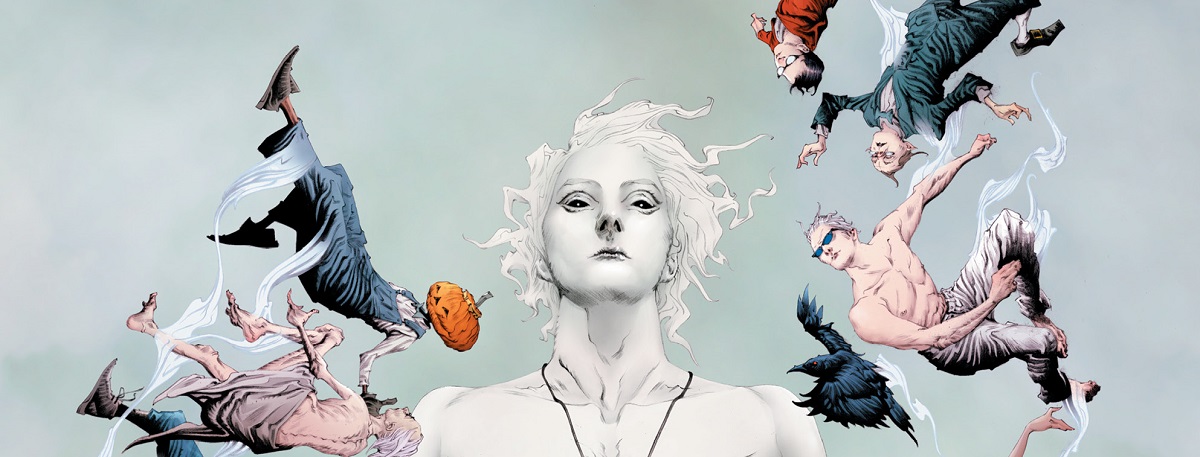
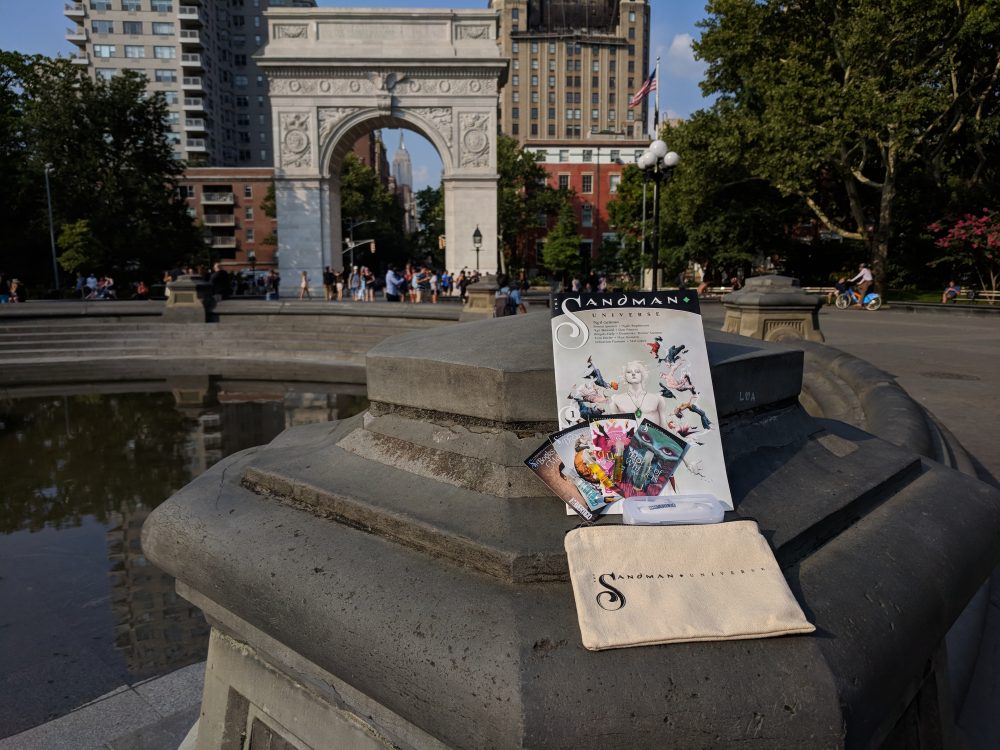
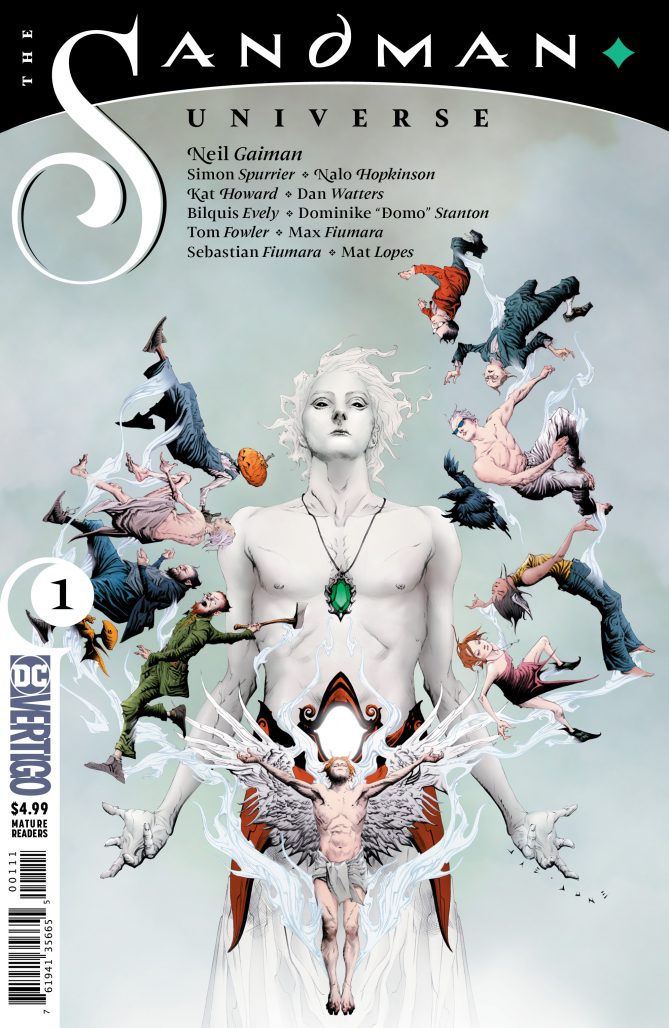
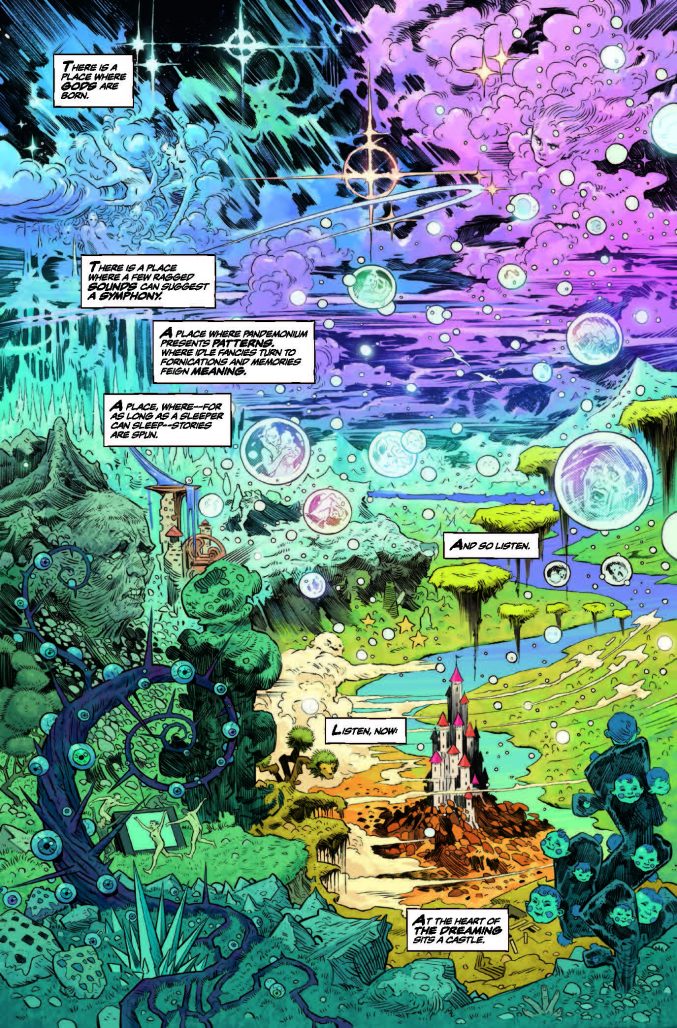
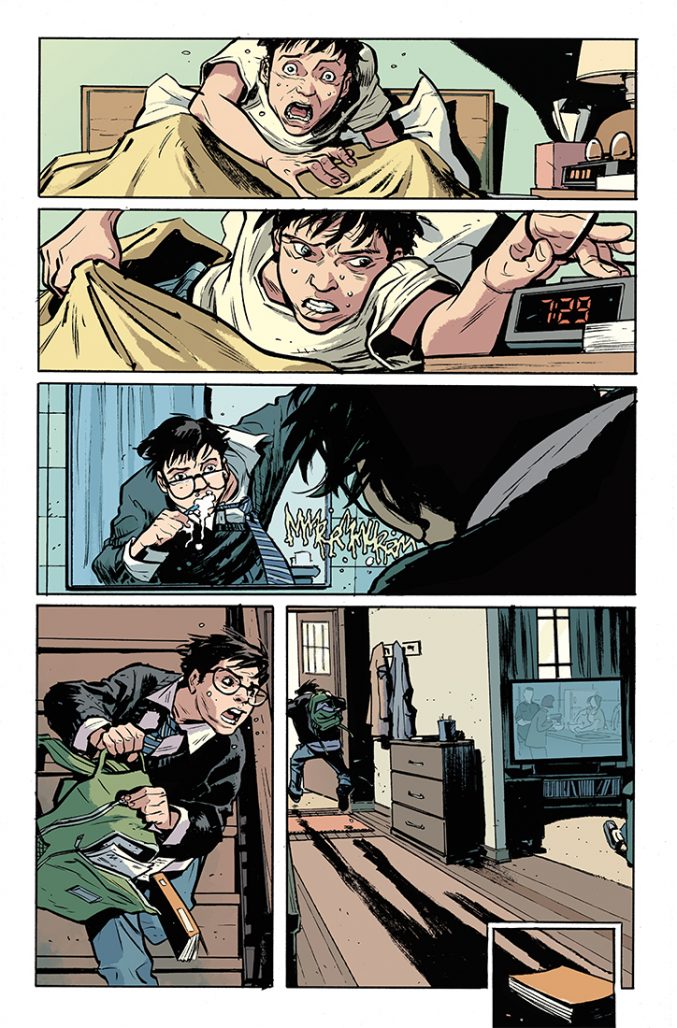
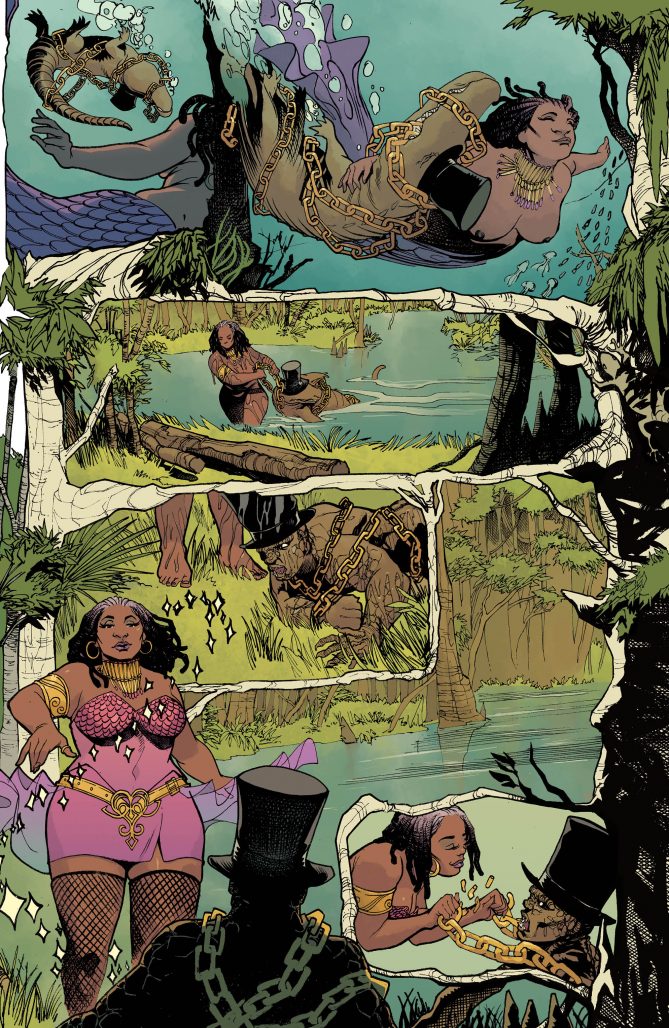
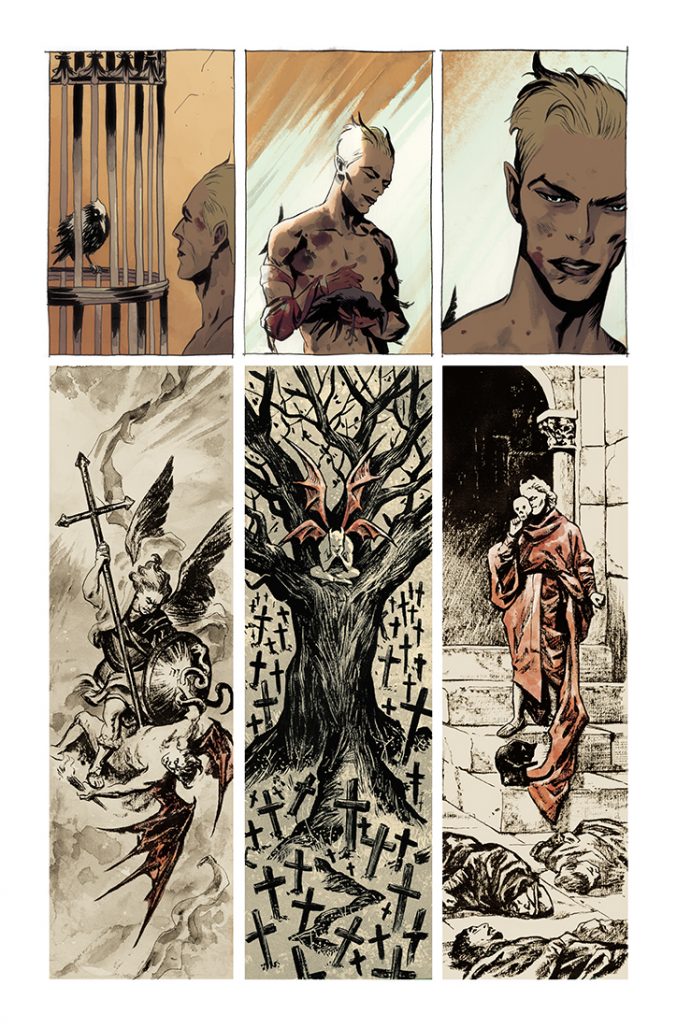





Glad to hear The Dreaming is good. I eventually get around to finding new good writers and Si Spurrier is my most recent discovery of what I think consider to be blindingly good comics (The Spire, X-Force, Cry Havoc, so far). I’m seriously considering getting The Dreaming in singles, which is a rarity for me.
Thanks for calling attention to Watters’ and the Fiumaras’ respective works. Lucifer looks/sounds great, and I’ll enjoy reading the creators’ backlists which is new to me.
Comments are closed.